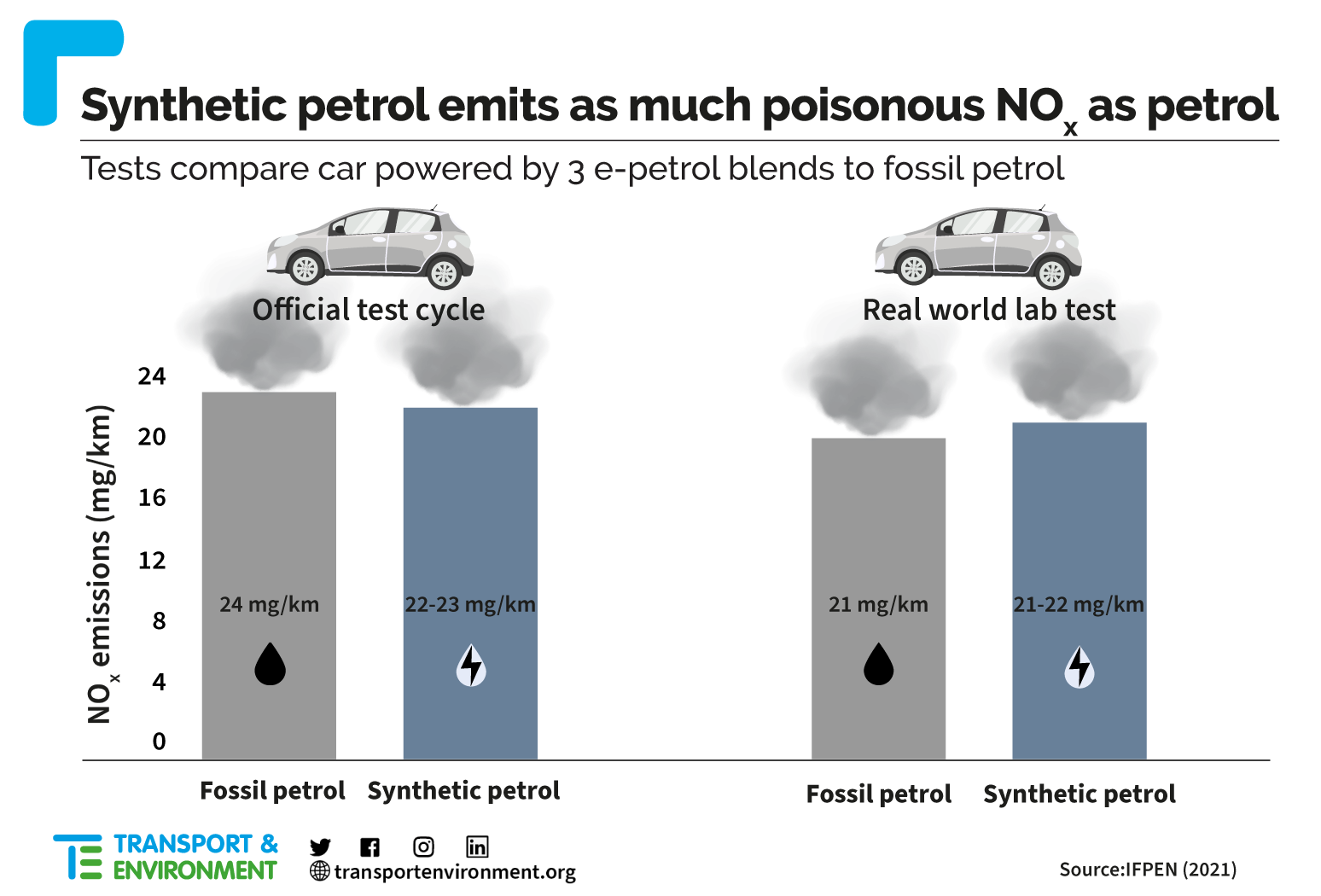Cars powered by synthetic fuel emit as much poisonous nitrogen oxides (NOx) as fossil fuel engines, new emissions testing shows. E-fuels, which are chemically similar to petrol and diesel and costly to produce, have been touted by the fossil fuel industry and car parts suppliers as a way to prolong the life of the internal combustion engine beyond zero-emissions targets. Green group Transport & Environment (T&E) said the tests confirm that using e-fuels in cars will do little to alleviate the air quality problems in our cities.
A car running on e-petrol emits equally high levels of toxic NOx as standard E10 EU petrol and much more carbon monoxide and ammonia, according to the tests by research organisation IFP Energies Nouvelles for T&E. While particle emissions are considerably reduced in the switch, more than two billion particles are still emitted for every kilometer driven in an e-petrol powered vehicle. The laboratory tests compared emissions from a car using petrol and three different blends of e-petrol.

When burned, synthetic petrol causes almost three times more carbon monoxide – which deprives the heart and brain of oxygen – compared to petrol. The e-petrol powered car also emitted up to two times more ammonia, which can combine with other compounds in the air to form particles (PM2.5) for which there is no safe level of pollution. The health risks of PM2.5 include asthma, heart disease and cancer.
Julia Poliscanova, senior director for vehicles and e-mobility at T&E, said: “No amount of spin can overcome the science of burning hydrocarbons. As long as fuel is combusted in engines, toxic air will persist in our cities. Lawmakers who leave loopholes for e-fuels in emissions targets are condemning the public to decades more of avoidable air pollution.”
A fuel for the wealthy
Industry proposals to allow loopholes for e-fuels in EU car CO2 targets will drive up costs for drivers, T&E research shows. Running a car on e-fuels over five years will cost a driver €10,000 more than running a battery electric car, the analysis finds. High e-fuel costs will also make running second-hand cars on e-petrol around €10,000 more expensive over the same timeframe. This makes them ill-suited to decarbonise the existing fleet, something the oil and car parts industry advocate for.
A scarce and energy-intensive fuel
Despite much publicity, today there is no synthetic petrol for sale. To run these tests, IFP Energies Nouvelles had to produce around 100 litres of e-petrol itself. Commercially producing e-fuels is also far less efficient than powering electric vehicles. Supplying just 10% of new cars with e-fuels instead of electrifying them will require 23% more renewable electricity generation in Europe, an independent study for T&E shows. Synthetic fuels should instead be prioritised for planes, most of which cannot use batteries to decarbonise and which today burn fossil fuels that may be even worse for air pollution, T&E said.
Julia Poliscanova said: “E-fuels have lost the race to clean up cars, but in truth it was never even close. Battery electric cars offer drivers the cleanest, most efficient and affordable way to decarbonise, while synthetic fuels are best suited to planes where electrification is not an option. The credibility of Europe’s clean car policy is on the line and any diversion into e-fuels is a new lease of life for old polluting engines.”
MEPs and governments are currently deciding on an EU Commission proposal that all new cars sold in 2035 be 100% zero-emissions – leaving no back door for e-fuel cars.
Read more:
Report: Magic green fuels – Why synthetic fuels in cars will not solve Europe’s pollution problems
Rebuttal: T&E debunks misleading criticisms of e-fuels testing


